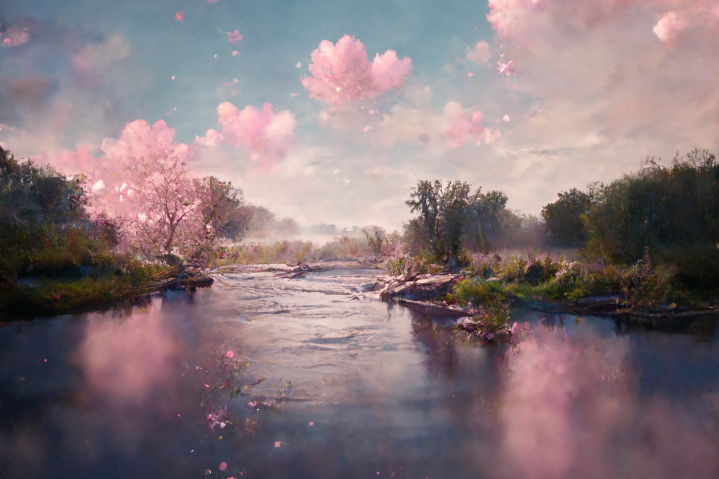
When it comes to AI image generators, you’ve got your choice from dozens these days. Two standouts from that pack (which includes Dall-E, Firefly, Stable Diffusion, and Playground AI) are Midjourney and Grok 2 — the former with its well-deserved reputation of generating stunningly lifelike images, the latter known for being able to conjure onscreen virtually any idea imaginable, regardless of copyright restriction or longstanding societal norm.
Here are the essential facts you need to know about each.
Pricing and tiers

You’re going to need to pony up some cash if you want to try either platform as neither offers a free tier for users. X (formerly Twitter) offers the X Premium account for $7/month, which offers half as many ads and a “larger reply boost” as the baseline site experience, while the $14/month Premium+ package removes ads entirely and allows you to write articles as well as tweets. Both subscriptions will give you early access to Grok.
Midjourney, on the other hand, offers four levels of subscription, which can be billed monthly or annually. The Basic plan is $10/month and grants you 3.3 hours of Fast GPU time a month. You can buy more access time for $4 a pop. The $30/month Standard plan increases your Fast GPU access to 15 hours a month with unlimited “Relax” GPU time.
The $60 Pro Plan increases that to 30 hours of Fast GPU time monthly, as well as gives you additional slots in the processing queue, and for a whopping $120/month the Mega plan offers 60 Fast GPU hours a month. Also note that if your company makes more than $1,000,000 in gross revenue per year, you’re required to get a Pro or Mega plan.
What is Grok, and what can it do?
Grok is a chatbot from xAI, the startup founded by Elon Musk after he quit OpenAI’s board over an issue of the company’s governance. The original Grok-1 model was released in November 2023 and, according to Musk, trained on a cluster of “tens of thousands” of GPUs. Grok-1.5 superseded Grok-1 in March 2024, and was itself surpassed by Grok-2, which arrived in August 2024.
Grok primarily operates as a chatbot, much the same as ChatGPT, Gemini, Claude, or Copilot do. It’s trained on a mix of publicly sourced internet data (with knowledge up to the latter half of 2023) and X user data — all those billions of tweets and community notes. Grok is unique in that it is tied directly to the X social media platform and can access information from it in real time, much like other chatbots can perform internet searches to find info on events that occurred after their knowledge cutoff dates.
This enables Grok to keep abreast of world events but could also make it more likely to hallucinate facts and return inappropriate responses to user queries, given its source material.
Grok 2 doesn't give a darn about copyright lmao
This will be fun while it lasts pic.twitter.com/qiiScOGt8I
— Brendon (@Bmaynze) August 14, 2024
The latest version of Grok is the first to offer image generation capabilities, thanks to its integration with the Flux.1 model developed by Black Forrest Labs. Grok-2 made waves when it debuted in August because, unlike other chatbots, its image creation capabilities do not have any discernible safety guardrails to prevent them from generating copyrighted, violent, racist, or otherwise harmful images.
What is Midjourney, and what can it do?
Midjourney is one of the OG image generators of the AI revolution, alongside Dall-E and Stable Diffusion. It may not have a chatbot component like Grok, but Midjourney does create images based on your natural language prompt either through a Discord bot or the company’s web editor.
It can generate pictures in a wide variety of motifs, from cartoony animation and hand-drawn illustration styles to photorealistic glamour shots, as you might remember from the “Pope in a puffy jacket” meme of 2023. First released as an open beta in 2022, the AI has undergone multiple iterations with the latest, version 6.1, coming in late July 2024.

Midjourney has already made a name for itself as a premiere image generator, its art appearing on the covers of national publications like The Economist and The Atlantic. It even won first place in the digital art competition at the 2022 Colorado State Fair with its piece Théâtre D’opéra Spatial, which is pictured below.

Unlike Grok, Midjourney (beginning with version 5) utilizes an AI-based content moderation system that is more nuanced than the banned word system it used previously.
Where the old system simply prohibited pornographic and violent themes from being generated, as well as specific keywords like the names of religious and political figures, the new moderation scheme offers more context-dependent leeway. That is, you can now generate an image of Chinese President Xi Jinping (which was impossible under the old rules), but you still can’t get one of him in handcuffs (unless you use Grok).
Which is better for you?
Midjourney, without question. Unless you’re looking to violate copyright law or generate misinformation ahead of November’s presidential election, there’s no need for you to help prop up Elon Musk’s failing social media site with your $7 each month.
Services Marketplace – Listings, Bookings & Reviews
